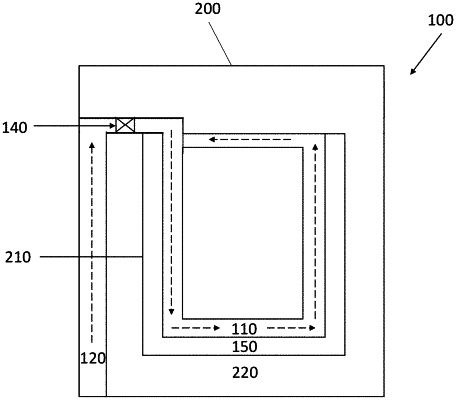| CPC F25B 30/04 (2013.01) [F25B 17/08 (2013.01); F25B 2315/006 (2013.01); F25B 2400/00 (2013.01); F25B 2600/2519 (2013.01); F25B 2700/21161 (2013.01)] | 30 Claims |

|
1. A sorption heat pump, comprising:
an evaporator structured to contain a working fluid, and operable to evaporate the working fluid to produce a working fluid gas in the evaporator;
a sorber structured to contain a sorption material to sorb the working fluid gas during a sorption phase;
a vapor pathway connecting the evaporator and the sorber;
a thermal control unit positioned to control the rate of vapor flow between the evaporator and the sorber through the vapor pathway, and being selectively operable to permit the flow of working fluid gas through the vapor pathway, to next stop the flow of working fluid gas through the vapor pathway, and after stopping the flow to then permit resumption of the flow of working fluid gas through the vapor pathway; and
a vacuum barrier material positioned about the sorber, evaporator, and vapor pathway to provide a reduced pressure therewithin to promote evaporation of the working fluid at a reduced temperature compared to the temperature required at ambient pressure, the vacuum barrier material being a multilayer laminate material and including first, second, and third multilayer laminate material portions, and the thermal control unit includes a vapor control valve made from the first, second, and third multilayer laminate material portions, a seal gasket, and a seal pin operable to control the rate of vapor flow between the evaporator and the sorber through the vapor pathway, the third multilayer laminate material portion having a first end portion and a second end portion, the first end portion being in sealed engagement with the first multilayer laminate material portion and the second end portion being in sealed engagement with the second multilayer laminate material portion to define an internal barrier, the third multilayer laminate material portion being positioned with the seal gasket to create a stable sealing surface, the seal pin protruding through the third multilayer laminate material portion, but not through the first multilayer laminate material portion or through the second multilayer laminate material portion, the seal pin being located proximal to the seal gasket, and the seal pin being movable toward the sealing surface by atmospheric pressure.
|